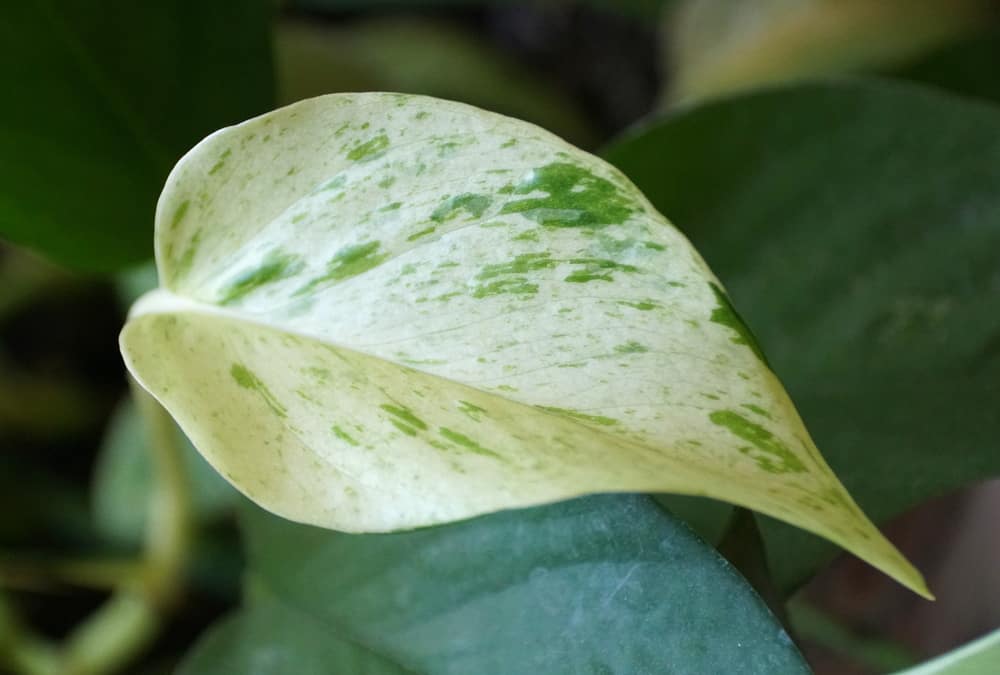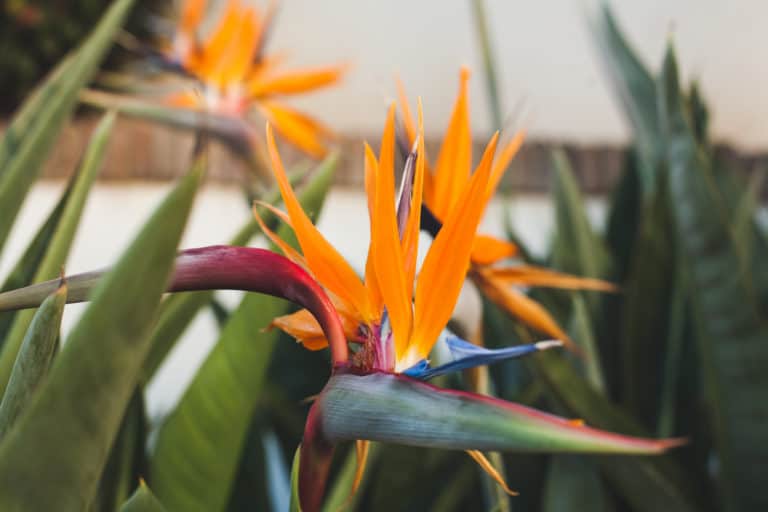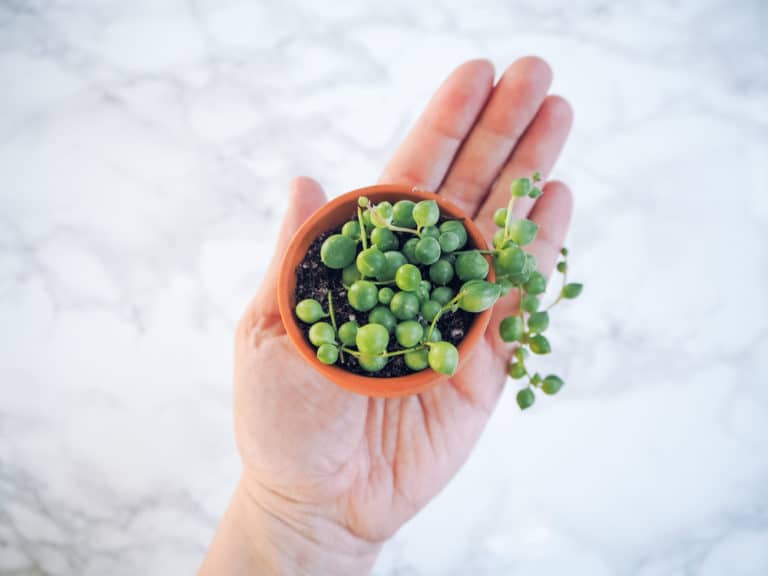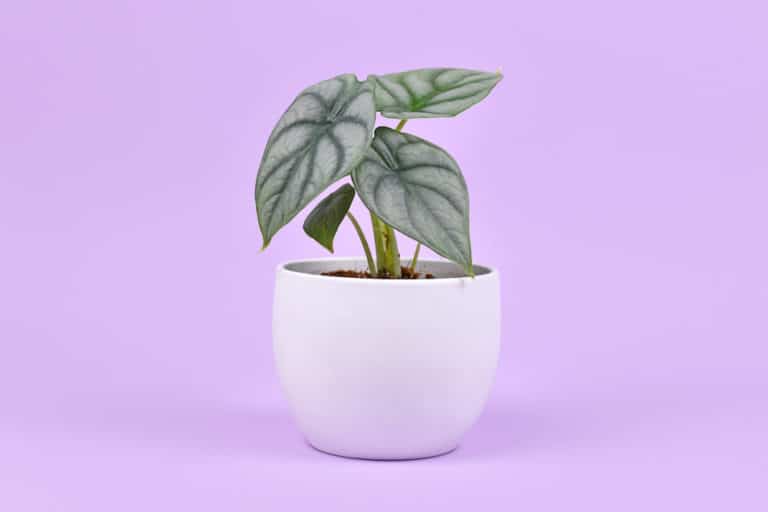Epipremnum Aureum ‘Snow Queen’ Care Guide (2024)

Pothos plants are quite popular in the houseplant scene as they are easy to care for and maintain. Thankfully, there are many unique varieties to choose from, and among them is the gorgeous Snow Queen Pothos. This plant boasts a white and green variegated look. It’s botanically known as Epipremnum aureum ‘Snow Queen’.
| Scientific Name | Epipremnum aureum ‘Snow Queen’ |
| Common Name | Snow Queen Pothos |
| Light | partial shade or indirect sunlight |
| Watering | watered once the top half of the soil is dry |
| Temperature | 60 to 80oF (16 to 27oC) |
| Hardiness Zone | 10-11, US |
| Humidity | 50% to a maximum of 75% humidity |
| Soil Type | Well-draining; two parts soil and one part perlite |
| Soil pH | 6.0 to 6.5 (slightly acidic) |
| Fertilizing | Every 2 months during the growing season (spring to summer) |
| Repotting | Every 2 to 3 years |
| Pruning | Prune the vines back on mine to prevent it from getting too leggy |
| Propagation | Water propagation or soil propagation |
| Toxicity | Extremely toxic to animals and to humans |
| Mature Size | 6-10 ft. long (indoors) |
| Bloom Time | Spring, summer |
What’s Unique About Snow Queen Pothos?
The variegated leaves of the Snow Queen Pothos plant are unique and appealing. It’s a combination of speckled white and green creating that marbled look. This type of variegation has some resemblance to that of Marble Queen Pothos. But, its white markings are more notable and dominant.
This gorgeous plant originates from the subtropical forests of Southeast Asia and Australia. It gained popularity among indoor plant enthusiasts for its high ornamental value. Aside from its aesthetic appearance, growing Snow Queen Pothos is also beneficial for your mental and physical health. It has the capacity to purify the air inside your home.
Snow Queen Pothos Care
Proper light, just enough water, high humidity, and warm temperatures are the most important elements of Snow Queen Pothos plant care. Once you’ve placed it in a location with the best growing conditions, it’ll certainly flourish.
Snow Queen care wouldn’t demand much effort. But there are specific requirements you need to achieve.
Light
A location with good lighting is important to keep this plant healthy and growing. To satisfy the Snow Queen Pothos light requirements, there has to be the presence of bright but indirect light. If you have an east-facing glass window, you can place the Snow Queen Pothos a few inches away so it won’t get scorched. Exposure to full sun is okay as long as it’s only for a few hours.
Snow Queen plant light needs to be between 5,000- 21,500 lux for 12-14 hours daily. In times of low light conditions, it’s best to use LED lights to supplement the lacking light.
Watering
Snow Queen Pothos is somehow drought-tolerant. This plant prefers to be on the dry side so you need to be careful not to overwater. Otherwise, it could result in more serious trouble like root rot. Insert your finger on the soil first to know the status of soil moisture. Water Snow Queen plant only if it’s dry up to the second knuckle.
Once the winter season arrives, reduce the frequency of Snow Queen Pothos watering. Always drain excess water and never let the soil get soggy. Remember that a big factor in maintaining pothos health is properly satisfying its watering needs.
Temperature
Proper temperature for Snow Queen is also a main contributing factor to ensuring proper growth and development. When it comes to Snow Queen Pothos temperature range, it’s best to maintain them between 60 to 80oF (16 to 27oC). In addition, the plant has a higher temperature tolerance as it can survive up to 90oF (32oC). However, it’s not frost-hardy.
This plant will best thrive in locations under the USDA hardiness zones 10 to 11. These areas offer a favorable climate for growing pothos. In case of sudden changes in temperatures, make sure to protect your Snow Queen Pothos plants so the damage will not be that huge.
Humidity
As being native to tropical areas, we can expect that the Snow Queen Pothos humidity requirements are high. For lush growth, the ideal humidity for Snow Queen is between 50% to 75%. If its current location is constantly dry, your plant will show signs of stress like the browning of the leaf edges. In that sense, there’s a need to do a little boost.
You have the option to transfer your pothos to a moist location like the kitchen or the bathroom. These places naturally emit a high humidity level. You can also use a humidifier or a pebble tray. Or if you have time, do an occasional misting around your plant.
Soil
Because this plant prefers to be a little on the dry side, it’s important that the Snow Queen Pothos soil is well-draining. You have to prepare a soil mix that is porous enough to drain excess water and contain enough oxygen. A simple combination of two parts soil and one part perlite will do the trick.
Having the correct combination of soil for Snow Queen is a deal-breaker. Without it, your plant will be prone to overwatering, and root rot. In addition, maintaining a slightly acidic (6.0 to 6.5) ph level for Snow Queen soil is also critical to make sure that the nutrients are available for the roots to intake.
Fertilizer
We recommend adding Snow Queen Pothos fertilizer every two months during the growing seasons (spring to summer). The plant isn’t a heavy feeder but it will reap benefits from a formula with a balanced fertilizer ratio of NPK. You just have to dilute the fertilizer with water to avoid fertilizer burns.
Stop adding fertilizer for Snow Queen during the winter season. During this time, the plant is resting or dormant. Hence, there’s not much active growing involved. Your plant will do well even without the supplemental nutrients. Avoid overfertilizing at all costs because it can instantly kill your Snow Pothos plant.
Potting & Repotting
It’s okay to keep this plant a little pot-bound. But you should conduct Snow Queen Pothos repotting when the roots start to emerge from the drainage holes. Too crowded roots aren’t good for the plant’s health. So, potting it again to provide fresh soil mix is the best practice.
Choosing the right pot size is important. It should be one size larger than the old one. Don’t move your pothos to a pot that’s too large. This would only lead to overwatering. Also, avoid repotting Snow Queen when it’s winter. Growth will be much faster if you repot during spring or summer when the plant is most active.
Pruning
Since pothos plants have a vining habit, they can grow up to 10 feet long when tended indoors. So, if you want to keep yours to a more manageable size, you better take Snow Queen Pothos pruning seriously. Trim down the vines and remove any discolored, dead, aged, or diseased leaves you see every so often.
Cutting Snow Queen also promotes bushier growth and prevents the plant from being spindly. This way, your plant will look more lush and attractive. Another benefit of pruning Snow Queen Pothos includes preventing the spread of pests and diseases by removing the infected parts.
Propagation
Snow Queen Pothos propagation is very easy. You can do this by simply taking cuttings and allowing them to root either in the water or directly in the soil. Choose a vine that is mature and healthy. Leave a node on when cutting because this is where the roots will emerge.
Cuttings will start showing root growth after three days or so. If you propagate Snow Queen. Using water, make sure to replace the water every so often to avoid the formation of algae. Once new leaves are formed, that’s a signal that your cuttings are already alive. You can now repot them in a larger pot to allow them to grow.
Also, make sure to check out our in-depth manjula Pothos plant care guide.
Common Problems of Snow Queen Pothos
A few Snow Queen Pothos problems can possibly arise when you’re growing the plant. Even when it’s considered a low-maintenance plant, it can be susceptible to stressful conditions too. Temperature changes, improper lighting, overfertilizing, overwatering, and underwatering are the common factors causing problems with Snow Queen. The leaves will show the symptoms.
Pests
Snow Queen Pothos pests normally include bugs like scale insects and mealybugs. Aphids and spider mites may also be present. So, you’ve got to prepare for these unwanted visitors as they can bring serious damage to your plant.
Regular inspection of your Snow Queen is necessary in order to spot these tiny pests. There are ways to get rid of them naturally. You can adjust the growing conditions so they won’t favor the growth of these organisms. Improving humidity is helpful to shoo away spider mites. Other than that, spraying pressurized water helps simply drive the pests. Other times, there’s a need to apply insecticidal soap.
Diseases
Snow Queen is also not immune to certain diseases. Since it has a drought-tolerant nature, excess moisture is normally a major problem that can lead to fungal infections and root rot. If such conditions are left without treatment, they could lead to the death of your plant.
There are certain practices to prevent the occurrence of Snow Queen Pothos diseases. One is to use a sterilized soil mix. Sterilization helps kill existing pathogens in the soil. Another one is to use disinfected tools when gardening, especially the shears you use in pruning. Ultimately, make sure not to let the soil wet and soggy.
Growing Problems
Some growing problems you may encounter may include discoloration of leaves, loss of variegation, curling and browning of leaf edges, and wilting or limping of the whole plant. Never downplay these signs as they clearly indicate that you have a sick plant. Better investigate the causes behind such problems.
For example, the discoloration in the leaves can be a result of humidity and temperature stress. Curling and browning may be caused by overfertilization or fungal infection. Lack of light can lead to the loss of variegation. Wilting, on the other hand, can be due to watering problems. Knowing the exact cause will help you decide on which treatment is appropriate.
Toxicity of Snow Queen Pothos
Pothos plants is generally toxic to pets and humans. So, no matter how gorgeous your Snow Queen is, it would still be wise to take caution when handling it. Its toxicity can lead to serious health trouble especially if you or your pets happen to ingest any portion of the plant.
For Humans
Humans including adults and children are both susceptible to pothos plant’s toxicity. Hence, if you wish to make it a houseplant, you have to handle it with extra care. It contains large amounts of calcium oxalates. This compound is like small sharp crystals that could serve as an irritant.
If you have sensitive skin, the plant sap can cause dermal problems. So, you have to wear extra protection like gloves. Once ingested, more serious problems may arise like irritation of the GI tract like the mouth and throat as well as the digestive system. Once this happens, consult the doctor immediately.
For Pets
Pets are also susceptible to the toxicity of Snow Queen pothos. It contains the same toxicity principle that could potentially harm your pets at home including your cats and dogs. The calcium oxalates coming from the plant tissues will cause irritation like a burning sensation in the mouth. Other symptoms include drooling, difficulty in swallowing, vomiting, and lack of appetite.
It’s best to bring your pets to the veterinarian doctor for proper treatment. And as a way of caution, place your pothos plant in an area that’s away from your pet’s reach. You can hang it somewhere so it remains elevated.
Snow Queen Pothos Appearance
Snow Queen Pothos appearance bear that classic look of heart-shaped leaves growing from vining stems. It has a trailing habit and will grow lovely in a hanging basket. The leaves are heavily variegated with white color and speckles of green. It is mainly popular for its gorgeous foliage. But it does bear flowers, too.
Foliage
The foliage of Snow Queen Pothos is its most stunning asset. Houseplant enthusiasts value this plant for its unique but beautiful variegation. Each leaf is dominantly speckled with white streaks along with a few green ones. The leaves follow a heart shape but their size is a little bit smaller than the other pothos variety.
A proper amount of light is the key to keeping the variegation vibrant and defined. If the light condition is very low, the foliage will turn into a greenish color. This is in an effort to capture more light for photosynthesis. Hence, you have to make sure it receives enough light.
Flowering
The appearance of the Snow Queen flower is a rare occurrence especially if it’s tended indoors. This is because this specific variety will need a little manipulation in order to flower. Horticulturists do this by spraying on gibberellic acid, a hormone that will help the plant flower.
Blooming usually occurs during the spring and summer seasons. Once Snow Queen Pothos flowering occurs, the blooms produced will have the appearance of a cream spathe having purple color around the spadix. The flower stalks follow an erect direction. Because of this rare occurrence, many are unfamiliar with the looks of a Snow Queen Pothos flower.
Size and Growth
If given favorable growing conditions, the size of Snow Queen Pothos can reach up to 10 feet long. Those vining stems will keep extending and growing if left untrimmed, giving your whole plant a leggy appearance. Mature leaves will have a size of 4 to 8 inches long.
The plant has a slow to medium growth rate. It loves to remain a little pot-bound so there’s no need to do frequent repotting. It is best to keep the plant bushy by regularly pruning the stems. This will help control the size, too. But if you want to reach its maximum size, go ahead and let the plant trail down.
Snow Queen Pothos Fragrance
There’s nothing much to expect when it comes to Snow Queen Pothos fragrance. This plant does not emit any special or notable scent. The leaves would smell plain and uninteresting. On the brighter side, this also favors those who have allergies to strong scents. You can keep this plant in your room without worrying about triggering your respiratory system.
In fact, it would be better to place this foliage plant in a place with less ventilation as it could help absorb toxins present in the air. It will provide you with fresh and clean air to enjoy. This is a better compensation for its lack of fragrance.
Suggested Uses for Snow Queen Pothos
Keeping a Snow Queen Pothos indoors is always beneficial. It adds beauty to any room, enhancing its overall interior look. You can have it potted or hanged. Make it an accent on tabletops or a corner plant near a window. It will surely give you that tropical vibe.
You may also combine your Snow Queen Pothos with other foliage plants to create a variety. With its unique variegation, it won’t be difficult for this plant to stand out. It will also be a great option for gifting to your loved ones who are plant lovers, too! After all, pothos is known to bring luck and good fortune.
FAQ
What is Snow Queen Pothos?
Snow Queen Pothos is a variety of Epipremnum aureum that is characterized by its white with green speckled variegation. It has close similarity with the marble pothos but with a different variegation pattern.
How to identify Snow Queen Pothos?
Snow Queen has dominant white color and speckled green variegation. The heart is also heart-shaped. Marble Queen, on the other hand, has a predominantly green color with white streaks.
How to care for Snow Queen Pothos?
Plant it in well-draining soil and place it under partial shade. Provide little watering to avoid root rot. Keep it away from cold drafts as the plant is not frost-hardy.
How to grow Snow Queen Pothos indoors?
Keep the location from where it is planted humid. There must be bright but indirect light available to keep the variegation vibrant. Let the soil dry a bit before watering again.
How to grow Snow Queen Pothos outdoors?
Outdoors, plant your Snow Queen Pothos in a location with dappled light. Avoid subjecting it to direct sunlight as this could stress the plant leading to leaf scorching.
How fast does Snow Queen Pothos grow?
Snow Queen Pothos has a medium growth rate. It prefers to be a little pot-bound so you’d have to wait at least 2 to 3 years before repotting.
How tall does Snow Queen Pothos grow?
The maximum height that a Snow Queen Pothos can reach is about 6 to 10 feet. It has a trailing habit so the stems will stretch out in a downward direction.
How to make Snow Queen Pothos grow faster?
Provide a steady supply of nutrients through the application of diluted fertilizer once a month during spring and summer. Keep it in a warm place with high humidity.
How to stake Snow Queen Pothos?
Snow Queen Pothos is a vining plant so you can use a stake to train and shape the stems to the desired shape. Tie the stems up a moss pole or bamboo rod.
How to pot Snow Queen Pothos?
Wait for spring or early summer to arrive. Choose a container slightly larger than the old pot. Transfer the plant to the new container, filling it in with the fresh potting mix. Water thoroughly.
How to revive Snow Queen Pothos?
Observe the symptoms first, especially those on the leaves. Browning, yellowing, curling, and loss of variegation have various causes. From there, adjust the growing conditions accordingly.
Why is my Snow Queen Pothos dying?
Some reasons for a dying Snow Queen Pothos are watering problems (overwatering or underwatering), improper light and temperature conditions, and the occurrence of diseases or pests.
Why is my Snow Queen Pothos drooping?
Drooping can be a result of root rot or any soil-borne disease. It can also be due to temperature stress or lack of humidity. Hence, it’s important to check the environment first.
How cold can Snow Queen Pothos tolerate?
Snow Queen Pothos can tolerate a temperature as low as 50oF (10oC). Below this threshold, your plant will show signs of stress. Plus, it’s not frost-hardy.
How to get rid of pests on Snow Queen Pothos?
Inspect your plant regularly. Once you spot pests, spray them off with pressurized water to get rid of them. You may also use diluted solutions containing insecticidal soap or neem oil.
Is Snow Queen Pothos toxic to cats?
Like all the other varieties of pothos, the Snow Queen Pothos is also toxic to pets like cats. You’d have to keep it away from their reach.
Is Snow Queen Pothos toxic to dogs?
Your dogs are likewise vulnerable to the toxicity brought about by Snow Queen Pothos. It can bring serious irritation to the mouth, throat, stomach, and intestines.
Is Snow Queen Pothos toxic to children?
Yes. It contains a large number of calcium oxalates that can irritate the GI tract once ingested. Be careful to keep it away from your kid’s reach.
Is Snow Queen Pothos toxic to humans?
Yes. It’s important to wear gloves when handling the plant especially if the sap is exposed. It could irritate the skin. When ingested, it could lead to more serious damage.
Does Snow Queen Pothos have a scent?
The leaves of Snow Queen Pothos have no scent. It doesn’t produce any inviting smell. The flowers, on the other hand, have a fragrant scent. However, flowering is such a rare occurrence.






